Dracaena is a popular houseplant known for its attractive foliage and easy care. However, if you notice your plant is looking unhealthy, with yellowing leaves or drooping appearance, it may be a sign that it is dying.
Understanding the signs of dracaena plant dying and the common causes behind it can help you take the necessary steps to revive your plant and ensure its long-term health.
One of the most common causes of a dying dracaena is overwatering, which can lead to root rot and other serious issues. In addition, the environment in which the plant is kept can also play a role in its health, including factors such as lighting, temperature, and humidity.
Proper watering techniques, correct soil and potting mix, and adequate fertilization are also important for maintaining a healthy dracaena plant. If you suspect your dracaena plant is dying, it is important to act quickly to revive it and prevent further damage.
Key Takeaways
- Understanding the signs of a dying dracaena and the common causes behind it can help you take the necessary steps to revive your plant and ensure its long-term health.
- Overwatering is a common cause of a dying dracaena, as well as environmental factors such as lighting, temperature, and humidity.
- Proper watering techniques, correct soil and potting mix, and adequate fertilization are important for maintaining a healthy dracaena plant.
Learn more how to revive dying plants from these other related posts:
Understanding Dracaena
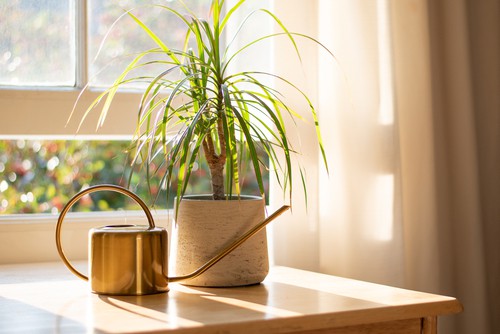
Dracaena is a genus of plants that includes a wide range of species, such as the Corn Plant and the Dragon Tree. These plants are popular for their ornamental value and are often grown as houseplants. They are native to Africa, Madagascar, and other tropical regions.
One of the most common varieties of Dracaena is the Dracaena marginata, also known as the Madagascar Dragon Tree. It is a popular houseplant due to its attractive foliage and ease of care. The plant has long, narrow leaves that are green with a red edge.
Another popular variety is the Dracaena fragrans, which is also known as the Corn Plant. It has broad, green leaves that resemble corn leaves. This plant is also easy to care for and is often used as a decorative plant in offices and homes.
Dracaena plants come in a variety of shapes and sizes, with some growing up to 6 feet tall. They also come in different colors, such as the yellow-edged variegated type of Dracaena reflexa.
These plants are hardy and resilient, but they can be sensitive to changes in their environment. They prefer bright, indirect light and well-draining soil. Overwatering can lead to root rot and cause the plant to die, so it is important to water them sparingly.
Signs of a Dying Dracaena
Dracaena plants are known for their hardiness and ability to thrive in various conditions. However, even the healthiest dracaena can fall ill and start showing signs of distress. It is essential to recognize the signs of a dying dracaena to take swift action and prevent further damage.
One of the most common signs of a dying dracaena is yellowing leaves. When the leaves of a dracaena plant start turning yellow, it is often a sign of overwatering or underwatering.
Additionally, brown or crispy leaves can mean that the plant is not getting enough water. Drooping or droopy leaves are also a sign of dehydration, which can be caused by over or underwatering.
Another sign of a dying dracaena is soft stems. If the stem of a dracaena plant feels soft or mushy, it may be a sign of root rot. Root rot is a fungal disease caused by overwatering and can be fatal to the plant if not treated promptly.
In some cases, a dying dracaena may start dropping leaves. This can be a sign of stress caused by changes in temperature, light, or humidity. Dropping leaves can also be a sign of pest infestation or disease.
It is important to note that some of these symptoms may also be caused by environmental factors such as too much or too little light, extreme temperatures, or low humidity. Therefore, it is crucial to assess the plant’s growing conditions and make any necessary adjustments.
Dracaena Plant Dying – 5 Common Problems
Dracaena plants are known for their hardiness and resilience, but even they can struggle in suboptimal conditions. Here are some common causes of a dying dracaena plant:
1. Overwatering
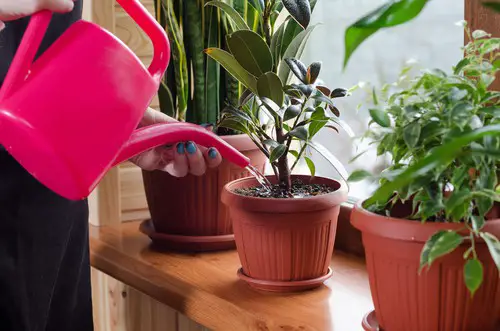
Overwatering is one of the most common causes of a dying dracaena plant. Dracaenas prefer well-draining soil and do not like to be watered too frequently. If the soil is constantly wet or waterlogged, it can lead to root rot, which will eventually kill the plant. Signs of overwatering include yellowing leaves, mushy stems, and a foul odor emanating from the soil.
2. Underwatering
Underwatering is another common cause of a dying dracaena plant. These plants are native to tropical regions and need consistently moist soil. If the soil dries out, the roots can become damaged, which can cause the plant to wilt and eventually die. Signs of underwatering include dry, brown leaves and a general lack of growth.
3. Insufficient Light
Dracaena plants require bright, indirect light to thrive. If they are placed in a location with insufficient light, they may become weak and susceptible to disease. Conversely, if they are placed in direct sunlight, their leaves may become scorched and brown. Signs of insufficient light include slow growth, small leaves, and a general lack of vigor.
4. Poor Soil Quality
Dracaena plants require well-draining soil that is rich in nutrients. If the soil is compacted or lacks essential nutrients, the plant may struggle to grow and eventually die. Signs of poor soil quality include stunted growth, yellowing leaves, and a general lack of vigor.
5. Pests and Diseases
Dracaena plants can be susceptible to a variety of pests and diseases, including spider mites, mealybugs, and fungal infections. If left untreated, these issues can cause serious damage to the plant and eventually lead to its demise. Signs of pest infestation or disease include discoloration, wilting, and a general lack of growth..
Role of Environment in Dracaena Health
Dracaena plants are hardy and resilient, but their health can be affected by their environment. The following factors play a significant role in the health and growth of dracaena plants:
1. Light
Dracaena plants need bright, indirect light to grow well. They can tolerate low light conditions, but too little light can cause the leaves to turn yellow and drop off. On the other hand, too much direct sunlight can scorch the leaves and damage the plant.
It is best to place the plant near a window that receives indirect sunlight or to provide artificial light if natural light is not available.
2. Temperature
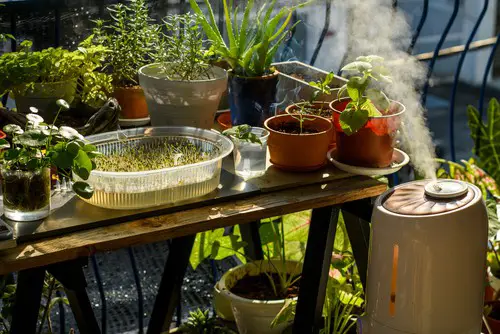
Dracaena plants are tropical plants and prefer temperatures between 60°F to 80°F (15°C to 27°C). They can tolerate temperatures as low as 50°F (10°C) and as high as 90°F (32°C) but extreme temperatures can affect their growth and health.
It is important to keep the plant away from drafts, heaters, and air conditioning units to avoid sudden changes in temperature.
3. Humidity
Dracaena plants prefer a humid environment and can benefit from occasional misting. Dry air can cause the tips of the leaves to turn brown and crispy. Placing a tray of water near the plant can also help increase the humidity around the plant.
4. Watering
Dracaena plants are sensitive to overwatering and can develop root rot if the soil is too wet. It is important to allow the soil to dry out between waterings and to avoid letting the plant sit in standing water. On the other hand, underwatering can cause the leaves to wilt and turn yellow. It is best to water the plant when the top inch of soil feels dry to the touch.
5. Location
Dracaena plants can thrive in a variety of locations, but it is important to choose a location that provides the right amount of light and temperature for the plant. They can be grown indoors or outdoors in hardiness zones 10 to 12. In colder climates, they are best grown indoors where the temperature and humidity can be controlled.
Proper Watering Techniques for Dracaena
Dracaena plants require proper watering techniques to survive and thrive. Incorrect watering is one of the main reasons why dracaena plants die. Here are some tips for proper watering techniques for dracaena plants:
1. Water Quality
The quality of water used for dracaena plants is important. Using tap water with high levels of chlorine and fluoride can cause brown tips on the leaves. It is recommended to use distilled water or rainwater for dracaena plants to avoid this problem.
2. Watering Frequency

Dracaena plants should be watered every 10-14 days, depending on the humidity levels in the environment. The soil should be moist but not soggy. Overwatering can lead to root rot, which is a serious issue that can kill the plant.
3. Watering Amount
The amount of water used for dracaena plants is also important. The plant should be watered until the water comes out of the drainage holes at the bottom of the pot. The excess water should be removed from the saucer to avoid overwatering.
4. Underwatering
Underwatering is also a common problem for dracaena plants. Yellowing of the leaves is a sign of underwatering. The plant should be watered immediately if the soil is dry to the touch.
5. Overwatering
Overwatering is usually the first variable to consider when there are signs of the dracaena faring badly. Too much water can lead to root rot, a serious issue that in extreme cases, presents no redemptive path for the plant.
6. Humidity
Dracaena plants prefer high humidity levels. Placing a humidifier near the plant or placing a tray of water near the plant can help increase humidity levels.
7. Root Rot
Root rot is a common problem for dracaena plants. It is caused by overwatering, which leads to the roots becoming waterlogged and unable to absorb nutrients. If root rot is detected, it is recommended to remove the affected roots and repot the plant in fresh soil.
Correct Soil and Potting Mix for Dracaena
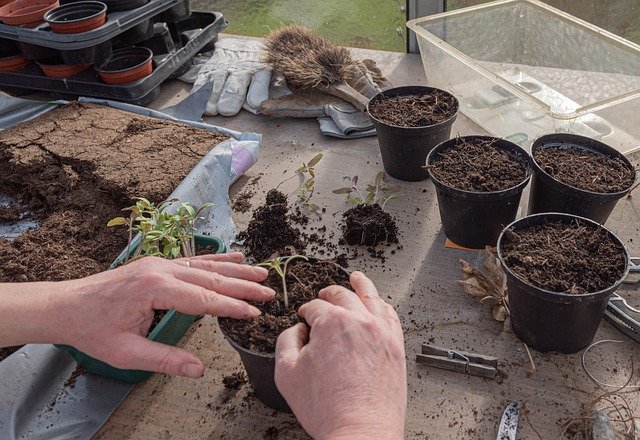
Choosing the right soil and potting mix is crucial for the health and survival of Dracaena plants. These plants require well-draining soil to avoid root rot, which can quickly kill the plant.
When repotting a Dracaena plant, it is essential to choose a potting mix that is well-draining and allows air to circulate around the roots. A good mix for Dracaena plants should include a combination of loam for nutrients, peat or coco coir for acidity, and vermiculite or perlite to improve drainage.
It is also important to avoid firming the potting soil too hard, as this can push the oxygen out of the soil and slow drainage. Instead, gently pack the soil around the roots to ensure good contact while allowing for proper drainage.
Dracaena plants thrive in slightly acidic soil with a pH between 6.0 and 6.5. Adding organic matter to the soil can help maintain the proper pH level and provide additional nutrients to the plant.
When choosing a pot for a Dracaena plant, it is essential to ensure that it has drainage holes to allow excess water to escape. Without proper drainage, the plant can quickly become waterlogged, leading to root rot.
Light and Temperature Requirements for Dracaena
Dracaena plants are known for their hardiness and resilience, but they still require proper care to thrive. One of the most important factors to consider when caring for a dracaena is its light and temperature requirements.
Light Requirements
Dracaena plants prefer bright, indirect light. Direct sunlight can scorch the leaves, so it’s best to place them in a spot that receives indirect sunlight. If the leaves start to turn brown or yellow, it may be a sign that the plant is getting too much direct sunlight.
On the other hand, if the leaves start to droop or the plant appears to be stretching towards the light, it may not be getting enough light.
Temperature Requirements
Dracaena plants are adaptable to a wide range of temperatures, but they prefer a consistent temperature range between 60°F to 80°F (15°C to 27°C). Temperatures below 50°F (10°C) can damage the plant, so it’s important to keep them away from cold drafts or air conditioning vents.
In addition to temperature, humidity is also an important factor to consider when caring for a dracaena. These plants thrive in humid environments, so it’s best to keep them away from dry, arid conditions.
Care Tips
To ensure that your dracaena plant is receiving the proper light and temperature requirements, here are a few care tips to keep in mind:
- Place the plant in a spot that receives bright, indirect light
- Avoid placing the plant in direct sunlight
- Keep the plant away from cold drafts or air conditioning vents
- Maintain a consistent temperature range between 60°F to 80°F (15°C to 27°C)
- Keep the plant in a humid environment, away from dry conditions
Fertilization Needs of Dracaena

Dracaena plants are low feeders and require minimal fertilization. Over-fertilization can harm the plant, so it’s important to follow the recommended guidelines for feeding.
Some experts suggest fertilizing dracaena plants once in the spring and once in the early autumn. Others recommend feeding once or twice a month during the spring and summer months. It’s best to feed them from March through September and allow a period of dormancy during the winter.
When fertilizing, use a low dose of a balanced plant food. Too much fertilizer can cause salt buildup in the soil, which can be harmful to the plant. Always follow the instructions on the fertilizer package and avoid over-fertilization.
Dracaena plants require less fertilizer during their growth stages before blooming. Being a succulent plant, dracaena requires very little fertilization.
It’s important to note that over-fertilization can cause the leaves of the plant to turn brown or yellow. If this happens, it’s best to flush the soil with water to remove any excess fertilizer and then reduce the frequency of fertilization.
Repotting a Dracaena
When a dracaena plant is dying, repotting it can be a good solution. Repotting allows the plant to have fresh soil, more space for its roots to grow, and better drainage. Here are some tips on how to repot a dracaena:
- Choose the right pot: The pot should be slightly larger than the current pot and have drainage holes at the bottom. A pot that is too big can cause the soil to stay wet for too long, leading to root rot.
- Prepare the soil: Use a well-draining potting mix that contains perlite or sand to improve drainage. Avoid using heavy soils that retain too much moisture, as this can suffocate the roots.
- Remove the plant from its current pot: Gently loosen the soil around the roots and remove the plant from its current pot. If the roots are tightly packed, use a clean knife or scissors to cut through them.
- Repot the plant: Place the plant in the new pot and fill in the gaps with fresh potting mix. Make sure the soil level is the same as it was before. Firm the soil gently around the plant, but avoid compacting it too much.
- Water the plant: Water the plant thoroughly but avoid overwatering. Allow the excess water to drain out of the pot’s drainage holes.
It’s important to note that repotting a dracaena should only be done when necessary. Overpotting can lead to waterlogged soil, which can harm the plant’s roots. Repotting should be done every two to three years, or when the plant has outgrown its current pot.
Dealing with Pests and Diseases in Dracaena
Dracaena plants are susceptible to various pests and diseases that can cause them to die. The following are some common pests and diseases that affect Dracaena plants:
Pests
Spider Mites
Spider mites are tiny pests that can cause a lot of damage to Dracaena plants. They are usually found on the underside of leaves, and they suck the sap out of the plant.
This can cause the leaves to turn yellow, dry up, and fall off. To get rid of spider mites, you can spray the plant with a mixture of water and dish soap. You can also use insecticidal soap or neem oil.
Diseases
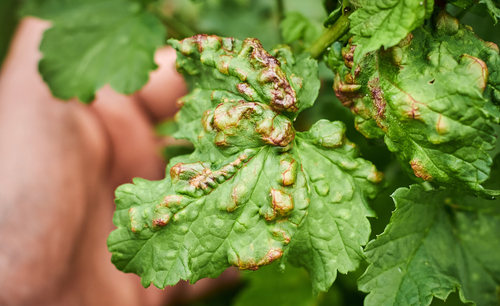
Fungal Infection
Fungal infections can cause the leaves of Dracaena plants to turn brown or yellow and fall off. This is usually caused by overwatering or poor drainage. To prevent fungal infections, make sure the soil is well-draining and avoid overwatering. You can also treat fungal infections with a fungicide.
Root Rot
Root rot is a serious disease that can kill Dracaena plants. It is caused by overwatering or poor drainage, which leads to the roots becoming waterlogged and rotting. To prevent root rot, make sure the soil is well-draining and avoid overwatering. If your plant has root rot, you may need to repot it in fresh soil and trim off any diseased roots.
Other Diseases
Other diseases that can affect Dracaena plants include leaf spot, stem rot, and bacterial leaf spot. These diseases are usually caused by poor growing conditions, such as high humidity, poor air circulation, or low light levels. To prevent these diseases, make sure your plant is grown in the right conditions and avoid overcrowding.
Reviving a Dying Dracaena
When a Dracaena plant starts to show signs of dying, it can be a concerning sight for any gardener. However, with proper care and attention, it is possible to revive a dying Dracaena plant.
One of the most common signs of a dying Dracaena plant is yellowing leaves. This can be caused by a variety of factors, including over or under-watering, root rot, or fungal infection.
To revive a Dracaena with yellow leaves, it is important to recreate the conditions of its natural environment. This includes watering the plant when the surface of the soil is dry, using a well-draining potting mix to improve drainage, and snipping back any roots with root rot to save the plant.
Another sign of a dying Dracaena is brown leaves. This can be caused by a lack of humidity, over-fertilization, or exposure to too much direct sunlight. To revive a Dracaena with brown leaves, it is recommended to mist the plant regularly, move it to a location with lower light levels, and reduce the amount of fertilizer being used.
If a Dracaena’s stem is soft or droopy, it may be a sign of overwatering. In this case, it is important to check the soil moisture level and make sure the plant is not sitting in water. If the soil is too wet, it may be necessary to repot the plant in well-draining soil and ensure that the new pot has drainage holes.
Propagation of Dracaena
Dracaena can be propagated through stem cuttings or by separating offsets from the parent plant. Stem cuttings are the most common method of propagation, and it involves cutting a stem from the parent plant and rooting it in water or soil.
To propagate through stem cuttings, select a healthy stem that is at least 6 inches long and cut it at a 45-degree angle, just below a node. Remove the lower leaves from the stem, leaving only a few at the top. Dip the cut end in rooting hormone powder and plant it in a pot filled with moist soil. Keep the soil moist and place the pot in a bright, indirect light.
Another way to propagate dracaena is by separating offsets from the parent plant. Offsets are small plants that grow from the base of the parent plant.
To separate an offset, gently dig around the base of the parent plant and locate the offset. Carefully separate the offset from the parent plant and plant it in a pot filled with moist soil. Keep the soil moist and place the pot in a bright, indirect light.
Propagation of dracaena is best done in the spring or summer when the plant is actively growing. It is important to use a well-draining soil mix and to avoid overwatering the newly propagated plant. With proper care, the new plant should root and begin to grow within a few weeks.
Frequently Asked Questions
How do I revive a dying Dracaena plant?
Reviving a dying Dracaena plant requires identifying the cause of the problem and taking appropriate action. Some common causes of a dying Dracaena plant include overwatering, underwatering, insufficient light, and pest infestations.
To revive a dying Dracaena plant, remove it from its pot and inspect the roots for signs of rot or damage. Trim any damaged roots and repot the plant in fresh soil. Adjust the watering schedule and provide adequate light to encourage new growth.
Can a Dracaena plant recover from brown and yellow leaves?
Yes, a Dracaena plant can recover from brown and yellow leaves. Brown and yellow leaves are often a sign of overwatering or underwatering.
To help the plant recover, adjust the watering schedule and trim any dead or damaged leaves. If the plant is severely damaged, consider repotting it in fresh soil and providing it with additional nutrients.
What causes Dracaena leaves to turn brown and fall off?
Several factors can cause Dracaena leaves to turn brown and fall off, including overwatering, underwatering, insufficient light, and pest infestations. Brown and falling leaves are often a sign of stress or damage to the plant. To prevent further damage, identify the cause of the problem and take appropriate action.
Is it possible to cut the top off a Dracaena plant to save it?
Yes, it is possible to cut the top off a Dracaena plant to save it. Cutting the top off a Dracaena plant can encourage new growth and help the plant recover from damage.
To do this, use a sharp, clean pair of scissors or pruning shears to cut the stem just above a leaf node. The plant will grow new leaves from the node and continue to grow.
Why did my Dracaena Marginata lose all its leaves?
Dracaena Marginata plants can lose their leaves for several reasons, including overwatering, underwatering, insufficient light, and pest infestations.
If your Dracaena Marginata has lost all its leaves, inspect the stem for signs of damage or rot. If the stem is healthy, the plant may be able to recover with proper care and attention.
What can I do to save a Dracaena plant with a mushy stem?
A mushy stem is often a sign of root rot, which can be caused by overwatering or poor drainage. To save a Dracaena plant with a mushy stem, remove it from its pot and inspect the roots for signs of rot or damage.
Trim any damaged roots and repot the plant in fresh soil with improved drainage. Adjust the watering schedule and provide adequate light to encourage new growth.

Hey, I’m Lisa and I’ve been an avid gardener for over 30 years. I love writing, talking and living in the garden! Feel free to connect with me on my socials below


